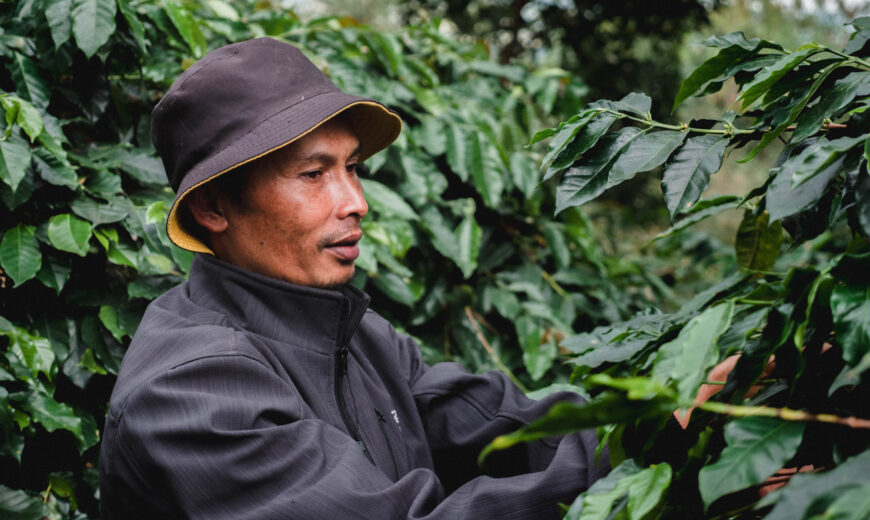Living Income Reference Prices

When farmers are trapped in poverty, they can’t afford to invest in more efficient or sustainable production methods to improve their income. They can’t pay their workers a decent wage, or worse, they may resort to using children for cheap labour.
A sector can never be sustainable if the farmers at the beginning of the supply chain aren’t able to make a decent living from the sales of their crop. That's why going beyond the Fairtrade Minimum Price and Premium, we developed the concept of a Living Income Reference Price.
What is a Living Income Reference Price?
This is the price a typical farmer household with a viable farm size and a sustainable productivity level needs in order to earn a living income from the sales of their crop. We currently have Living Income Reference Prices available for:
- Coffee: Nicaragua (2024)
- Coffee: Peru (2024)
- Cocoa: Côte d’Ivoire and Ghana (2023 update of Ivorian price to euros)
- Coffee: Ethiopia (2023)
- Coconut: Sri Lanka (2022)
- Coffee: Colombia (2022 updated)
- Coffee: Indonesia (2022)
- Coffee: Honduras (2022)
- Coffee: Uganda (2022)
- Vanilla: Madagascar (2024 updated; see report)
- Vanilla: Uganda (2019)
How do we calculate a living income reference price?
Fairtrade Living Income Reference Prices are calculated based on four key parameters:
- Costs to support a decent living (independent Living Income benchmarks)
- Sustainable target yield (stakeholder agreed productivity benchmark)
- Costs of sustainable production (investment required to attain the target yield)
- Viable land size (to fully absorb the available household labour)
The costs of decent living (or ‘living income benchmark’) are established for an average household in a specific country or region, and include: food expenditures (other than food that is produced on the farm for home consumption), decent housing, education, healthcare, clothing and other essentials, as well as a small provision for unexpected events.
The production costs are based on the adoption of sustainable agricultural practices required to reach the target productivity level, such as replacing old trees on a regular schedule and using adequate inputs. If besides the farm work by the household members external workers need to be hired, the costs to pay those workers a living wage are also included.
Productivity parameters are based on agreed assumptions for realistically attainable yields, and a farm size on which the adult household labour can be fully employed.
With these variables, we calculate Living Income Reference Prices to indicate the price that a full-time farmer meeting the target yield would need to earn to have a living income.
Contact us for more information on working with Fairtrade along the shared path towards living incomes for farmers. It’s the right thing to do – for farmers, for rural communities, and for a more just and sustainable world.